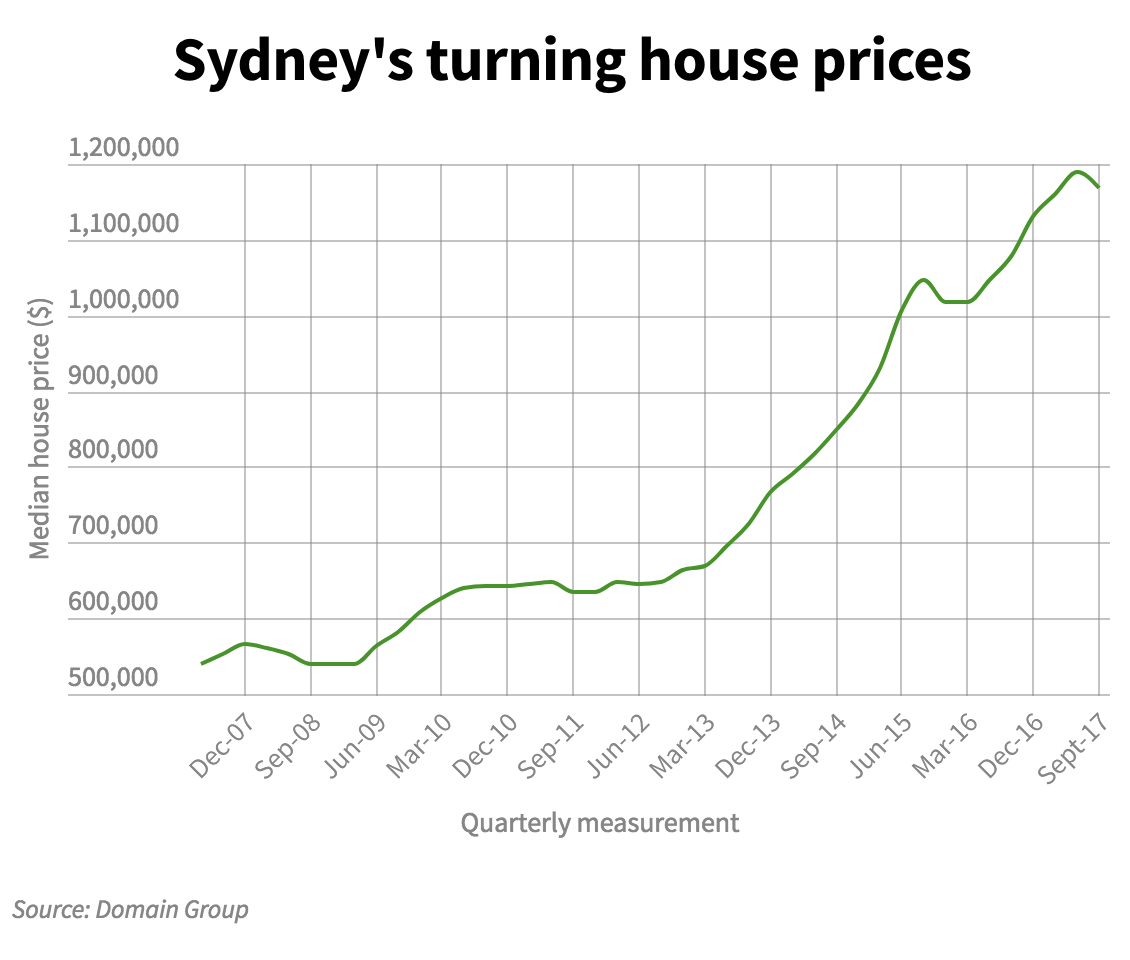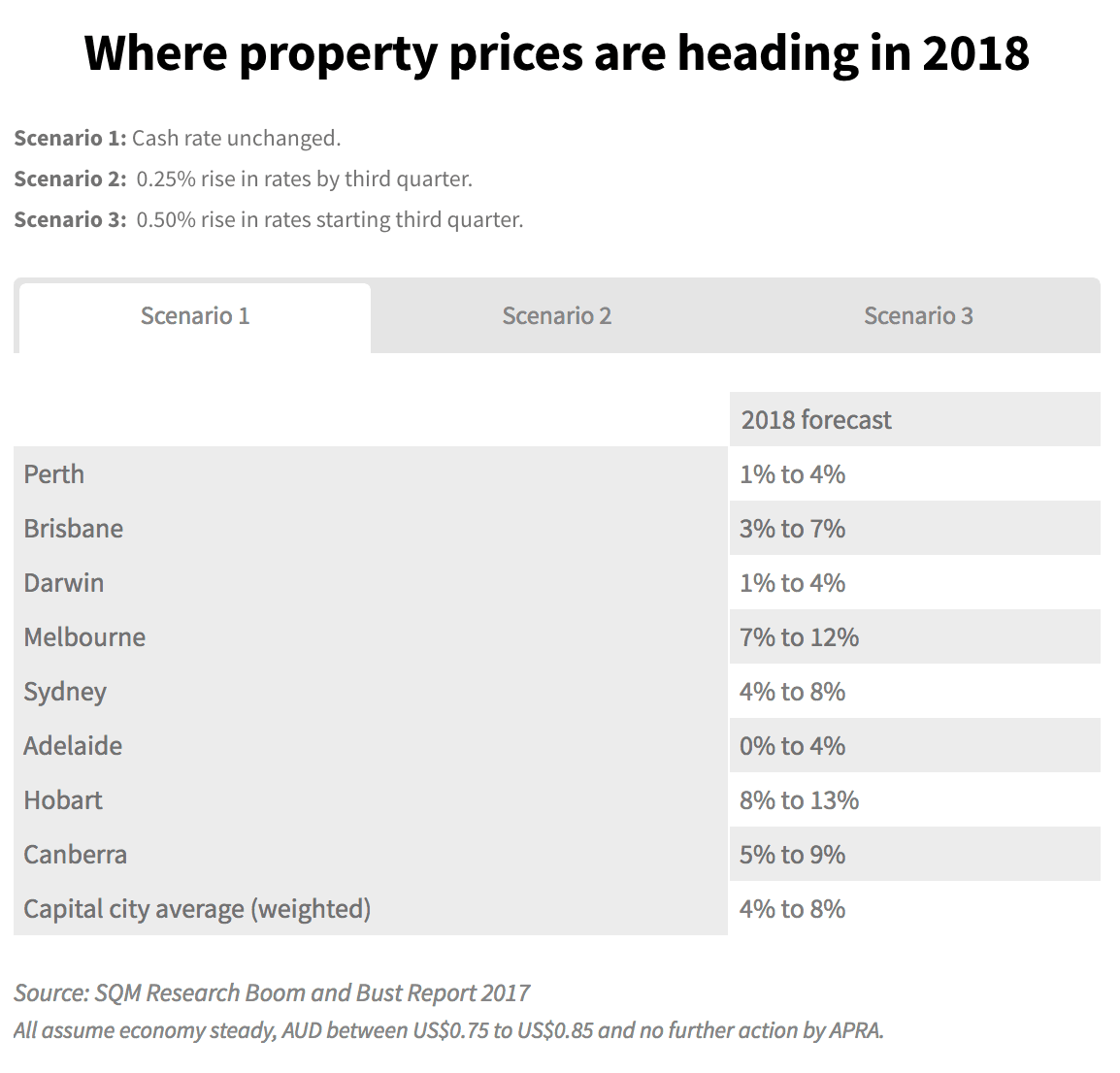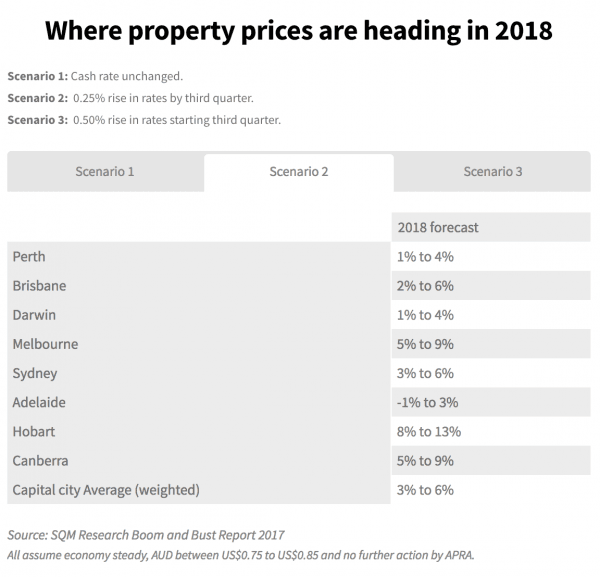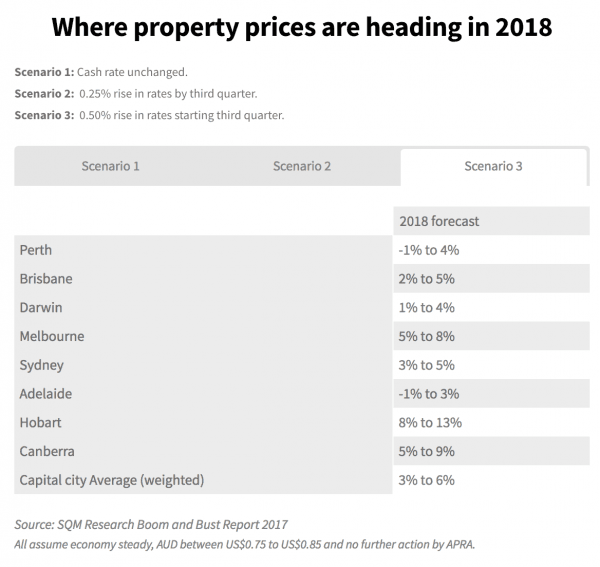Despite some of Australia’s heavyweight property markets – including Sydney – recording price declines, one expert is forecasting significant house price growth in 2018 across Australia.
Melbourne’s property market is expected to climb between 7 to 12 per cent in 2018, while Sydney is anticipated to soar between 4 and 8 per cent next year, SQM Research managing director Louis Christopher’s Housing Boom and Bust Report 2017 shows.
And in Canberra, prices are anticipated to increase by 5 to 9 per cent, the report claims.
These are ”base case” scenarios that reflect the forecast outcome if interest rates remain stable, if the banking regulator – the Australian Prudential Regulation Authority – doesn’t act to dampen lending activity and the Australian dollar remains stable.
While a strong growth outlook for Sydney would come as a surprise for some after recent data found prices had fallen in the harbour city, Mr Christopher said the market was “a repeat of the second half of 2015”.
In late 2015, prices declined but soon picked up again in 2016, posting another $100,000 in house price growth in the months since.
“It’ll be slow [for the first half of 2018] and will pick up in the second half,” he said.
But even a forecast of 4 to 8 per cent growth is a decline on price movements in Sydney during the price boom.

Despite this, it wasn’t Sydney or Melbourne that Mr Christopher tipped for the strongest growth next year, but Hobart, with up to 13 per cent price growth on the cards.
And Brisbane is also likely to experience strong growth, with forecasts in the 3 to 7 per cent bracket.
Perth and Darwin were also predicted to be entering their “first-year” recoveries, with 1 to 4 per cent growth anticipated in both cities.
But any increase in rates could dramatically change these outlooks. And any changes from APRA were also an “X factor” that could alter the market, and which have thrown a spanner in the works for earlier forecasts.
”APRA’s action, which came earlier than I had expected, has meant that the Sydney housing market is cooling sooner than expected,” Mr Christopher said, noting this had left their previous forecast of 11 to 16 per cent price growth too bullish compared to a likely 6 to 8 per cent result for 2017.
“The authorities were right to take action earlier this year to restrict investing lending by banks,” he said.
“Failure to have taken action would have resulted in out-of- control Sydney and Melbourne housing markets, where additional aggressive monetary policy may well have triggered a large fall in dwelling prices in 2018.”



The Melbourne and Sydney markets were likely to be most sensitive to any rate hikes – with even a 0.25 per cent increase likely to lead to a lower range of growth in both cities.
In Melbourne, this would be 5 to 9 per cent – or 5 to 8 per cent with a 0.5 per cent rate hike. In Sydney, the growth projects fell to 3 to 6 per cent growth with a 25 basis point hike.
But Domain Group chief economist Andrew Wilson said he couldn’t see Sydney prices increasing by 8 per cent “under any circumstances” – anticipating the growth to be half that at a maximum of 4 per cent for 2018.
“We are set for the lowest growth since 2011,” Dr Wilson said.
“It’s now a very different economic environment [compared to] when the boom began.”
Despite the changing economy, Propertyology buyer’s agent Simon Pressley said he also agreed double-digit growth was on the cards for Hobart, and Perth was reaching the bottom of the cycle.
“The gap between Hobart and the next best capital city will widen significantly during 2018 … we anticipate 2018 Hobart price growth to be in the high teens, with some prospect of pushing through 20 per cent and rental yields to remain above 5 per cent,” he said, tipping 17.5 per cent growth.
In Brisbane, the picture was less bright with “jobs needing to be addressed” before significant price growth was likely to be seen, but he had expectations in excess of 5 per cent.
He expected Sydney would grow by just 1 per cent in 2018.
